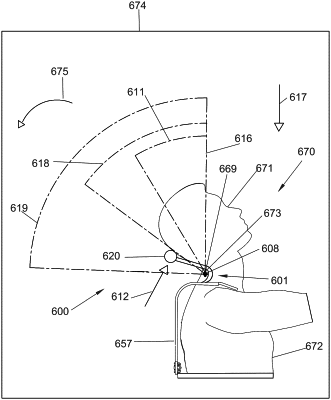| CPC A61H 1/0296 (2013.01) [A61F 5/05883 (2013.01); A61F 2005/0197 (2013.01); A61H 2201/1607 (2013.01); A61H 2201/1621 (2013.01); A61H 2201/1652 (2013.01)] | 18 Claims |

|
1. An exoskeleton configured to be worn by a person to support a head of the person during an extension motion of a neck of the person, the supporting exoskeleton comprising:
a torso frame having a first portion configured to apply a load onto at least one shoulder of the person and a second portion extending from the first portion, the second portion configured to extend along the spine of the person;
a head pillow configured to contact only a rear portion of the person's head; and
a resilient structure comprising a first end and a second end, the first end coupled to the torso frame, the second end coupled to the head pillow, the resilient structure configured to rotate the head pillow relative to the torso frame in a sagittal plane of the person about a first axis passing through the neck of the person and to generate a supporting force onto the head pillow in response to the extension motion of the neck of the person,
wherein the resilient structure defines an engagement angle where the head pillow is adapted to contact the rear portion of the person's head,
wherein the neck of the person extends posteriorly at a neck extension angle, the neck extension angle increasing from a non-engaging angle where the head of the person does not contact the head pillow, and
wherein the resilient structure defines the neck extension angle such that the head pillow is adapted to resist the extension motion of the neck of the person and to support the head of the person.
|